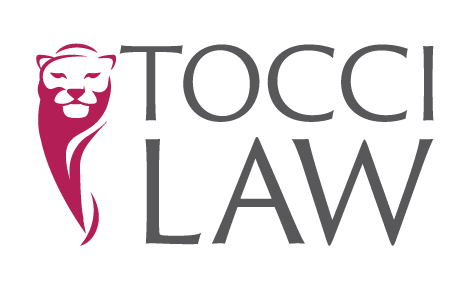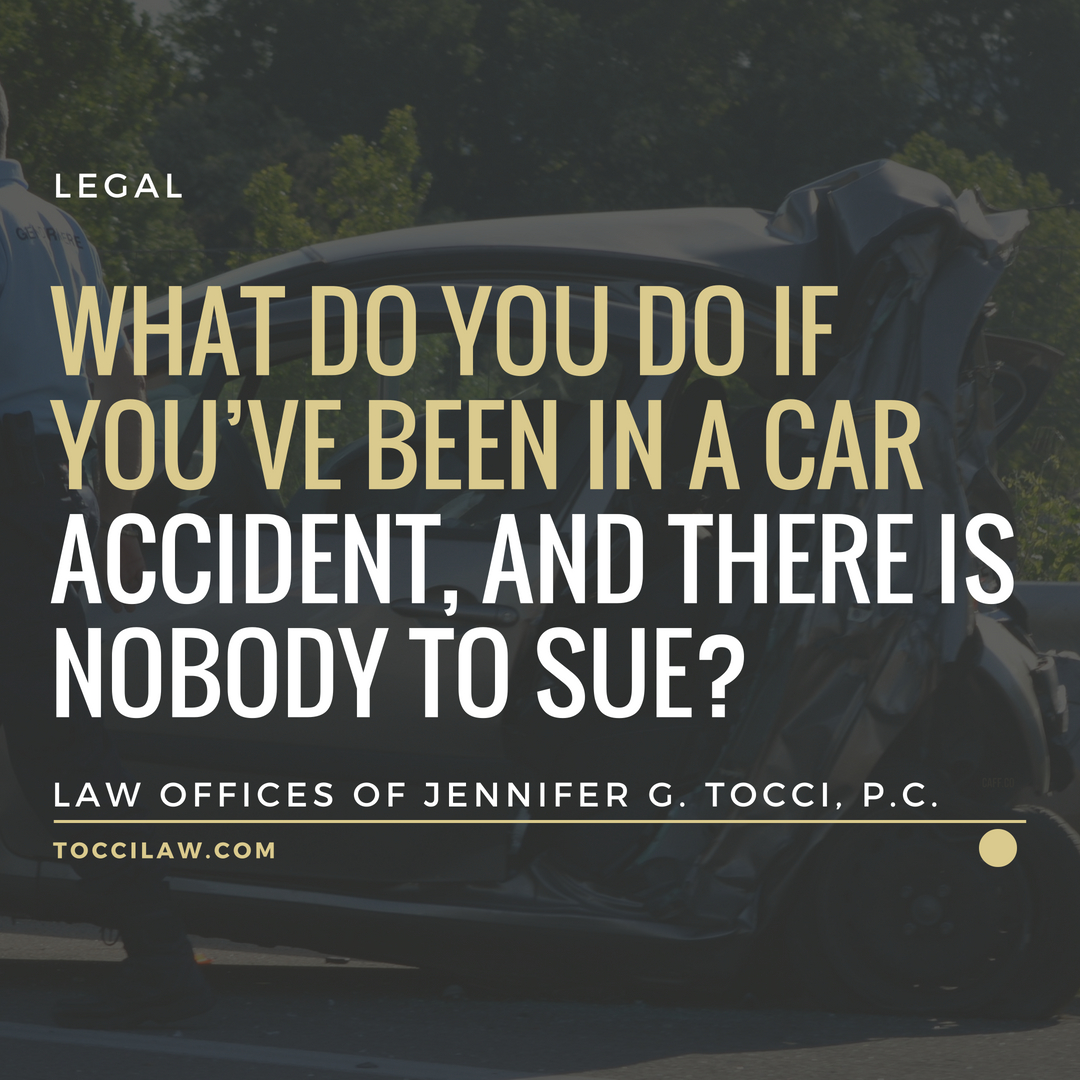You’ve been in a car accident. You’re injured. Your vehicle is damaged. You’re shaken up. But on top of it all, you’re also angry because even though it wasn’t your fault, you think there is nobody to sue. Maybe you’ve been in a hit and run, and do not know who the perpetrator is. Or perhaps the driver who hit you didn’t have insurance. Is the driver of the vehicle deceased? Are you severely injured and the at-fault driver only has the minimum insurance policy? Whom do you sue? How do you get compensated for injuries from a car accident when you’re in this type of situation? Do you give up, as the situation seems hopeless? The better idea is to contact an attorney, even in theses types of cases.
Your specific situation will depend on the strategy and procedure required for getting compensated for your injuries caused by another person who is unidentified, deceased, uninsured, or underinsured. Every situation could have subtle differences that change the actions you must take. A skilled attorney will be able to evaluate your scenario and handle your case accordingly. Below are some common situations where there appears to be nobody to sue.
Who Will Pay:
The Defendant(s) has/have No Insurance: If the person who caused the accident has no insurance, your insurance policy likely has uninsured motorist coverage and you may have paid for added coverage to compensate you for your injuries. Your New York State insurance policy will have statutorily required uninsured motorist coverage. In New York State, if you have the minimum policy and an uninsured driver hits you, you will be covered up to $25,000 against your own policy. You may pay for more coverage. If you have “Supplemental Uninsured/ Uninsured Motorist (SUM)” under your policy, you will be covered for more than $25,000 in the event that an uninsured motorist hits you. Additionally, you will be covered in the event an underinsured motorist hits you (see below).
Every vehicle in New York State must be insured. It is against the law to not have car insurance and to operate a vehicle in New York State. When you are driving someone else’s car, you could find yourself in trouble if his/her vehicle is uninsured, even if you are unaware of the lack of insurance. [Sidebar: A conviction for a ticket for “Operating a Vehicle without Insurance” in New York State will result in a fine of up to $1,500, in addition to a one-year suspension of your driver’s license and a $750 DMV penalty.] Although it is illegal to operate a vehicle without insurance, it is estimated that 5% of New York drivers do not have insurance.
It is important to have an attorney evaluate your case so that you can make sure all of your avenues for collecting are evaluated. If a member of your household has SUM coverage, you could be covered as well, even though you do not have SUM on your own policy. Additionally your attorney will be able to assess whether going after one defendant’s insurance policy is superior or collecting under your SUM, as you may have the ability to submit a claim against your own SUM where any one defendant does not have insurance.
[Sidebar: It is a smart idea to make sure you have adequate SUM coverage for your personal needs before you are in this situation. You should take into consideration whether you have a family to support, how much money you will need if you are unable to work as a result of the accident, whether you have disability insurance and whether it will cover you if you’re in a car accident, etc. The minimum insurance coverage is $25,000, which you may feel is not enough insurance should you find yourself in this unfortunate situation.]
Hit and Run: In this situation, the person(s) who should be the defendant(s) has/have left the scene of the accident, and therefore he/she/they are currently unidentifiable. There are 3 requirements that must be satisfied to get compensation for a hit and run.
- The accident MUST be reported to police within 24 hours: therefore, if you are in a hit and run, even if you feel at the time that reporting the accident to police is pointless, you should still report the accident, especially if you are injured.
- You must provide a sworn statement to your insurance company as soon as possible: You must provide a sworn statement to your insurance company, even where the insurance company does not request one. As soon as possible usually means within 24 hours or as soon as you are physically able, if you’ve been seriously injured.
- The other driver’s car must have hit you or into another car that actually hit you. This means that where snow or ice fly off of a car into yours, and that person leaves, you will generally not be able to recover.
Not Enough Insurance: If the driver/owner of the vehicle that hit you has insurance, but does not have enough insurance to cover your injuries. In this situation, you must have SUM coverage to proceed against your own policy. Additionally, you may only collect from your SUM policy if the amount of your coverage exceeds the defendant’s coverage. You cannot “stack” policies and collect the amount of them added up. Again, you may be able to collect against a household member’s policy as well.
If you believe you have an underinsured/uninsured motorist claim you usually have to notify the insurance company of a claim or the possibility of a claim within 30 days, or you could be denied for lack of providing notice to the insurance company. Your policy may set forth different rules and requirements unique to you, which must be followed for coverage.
It is permissible to sue someone personally beyond the amount of money available under his or her car insurance policy; however, the claim is usually dischargeable in a bankruptcy proceeding.
[Sidebar: If you collect Worker’s Compensation for the accident, you will almost always not be able to submit a claim through your SUM coverage.]
Defendant’s Insurance Company Claims Bankruptcy: If a defendant’s insurance company claims bankruptcy, you have the option to submit a claim through your uninsured/underinsured policy or proceed against the NYS Liquidation Bureau. Your attorney will be able to evaluate which avenue is a better route for you. A payout by your underinsured/uninsured coverage is usually faster, however, in certain circumstances, you could collect more via the NYS Liquidation Bureau.
Driver/Owner is Deceased: If the person you need to sue has passed away, you can still sue him/her. The representative of his/her estate will handle the matter. If the decedent (deceased person) was the driver, the insurance policy will likely cover claims from the date of the accident. However, if owner of the vehicle that hit you was deceased on the date of the accident, the insurance company will likely not cover the claim because the operator did not have the authority or permission to operate the owner’s vehicle. In this instance, you will probably need to submit through your uninsured/ SUM coverage.
Always read your insurance policy! Your insurance policy will govern what you’re covered for and in which instances. If your insurance policy sets forth different coverage than what is mentioned here or in an online search, your individual policy will apply.
As stated above, every situation is unique, and not all insurance policies are the same. In addition, there are several exceptions that may apply to your circumstance. Contact a skilled attorney. For a free thirty-minute case evaluation, call the Law Office of Jennifer G. Tocci, P.C., (631) 343-7676.
Attorney Advertising. This blog post is designed for general information only. The information presented at this site should not be construed to be neither formal legal advice nor the formation of a lawyer-client relationship. Prior results do not guarantee a similar outcome. New York State only.










